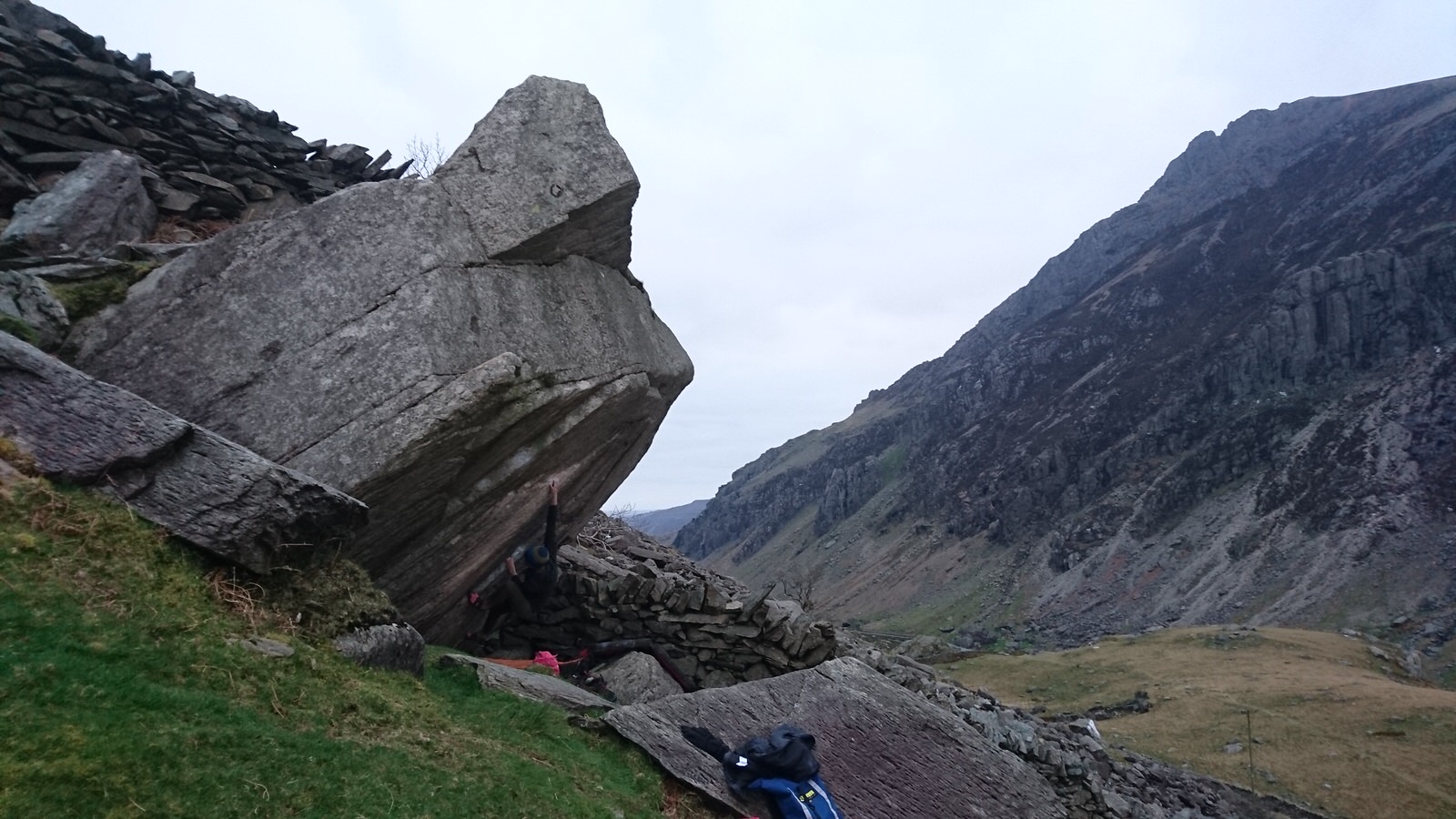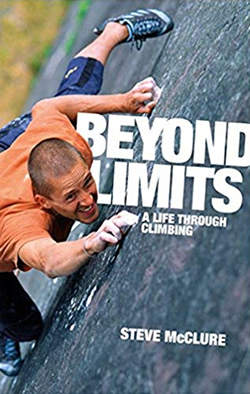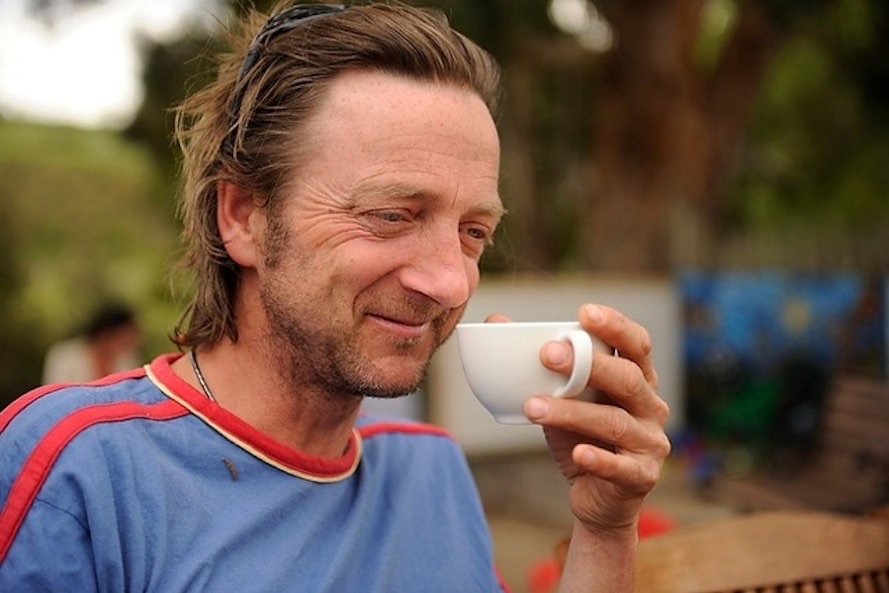Pete Edwards gives his thoughts on the latest technology to hit the cinemas - 3D technology. Does it do justice to popular films? And what should 3D cinematography really be used for?
With all the hype currently floating around, I’m not sure I’m convinced with this whole so-called 'three dimensional cinematography'. Several years ago, my friends invited me to see the final Harry Potter but neglected to mention it was in 3D, and by the time I realised what I’d let myself in for, it was a bit too late to back out, the normal showing not for another two hours.
We went in, and to be honest, I wasn’t impressed. I suppose it’s one of those 'each to their own,' but with me being short sighted and wearing glasses, I could never get comfortable. Couple that with the fact that we were not sat in the centre of the screen and the images just didn’t come straight at me: it just didn’t seem worth it. I could go on, but I think you get my point.

Karen McIntyre (climbing) and Alex Cutbush on an Unnamed 6b at The Barrel, Llanberis Pass. Photo: Pete Edwards
The next day, I drove home from work down the Llanberis pass. The sun was shining defiantly through cloud, the grass damp and green, and the famous Welsh crags glistened in the light. This was my daily commute for around ten years, and I never tired of it. It could be a bit laborious, the usual tourist traffic becoming a bit of a bore every now and again, but to be honest, it’s not a bad price to pay, especially when it was as picturesque as that day.
I have driven the Sea to Sky highway along Canada’s Pacific Coast. I have driven the alpine valleys of Switzerland, France and Italy. I have even driven through the desolate Spanish plains of the Iberian mountains, and yet this is still my favourite place to drive in all the world. There is a majesty that can only be experienced, one which once travelled on it’s finest of days can never be forgotten, and to a climber embroiled in climbing’s great history holds such significance that it can only bring awe.

Dan on Lizard King Low at Craig y Llwyfan, Llanberis Pass. Photo: Pete Edwards
This is what you should be capturing, I thought, not the make-believe fantasy worlds. The true greatness in this world is here for all to see, for anyone to experience, not in the minds of authors and directors. Slowly, as I descended at a speed I still maintain (to my mother at least) is a sensible one, it dawned that even roads do not do justice to the possibilities of multi-depth cinema.
In the summer of 2011, I flew to Vancouver, my plan to pull an all-nighter to avoid jet-lag the night before my flight backfiring horribly as I sat in my window seat next to a rather large gentleman unable to sleep. With my eyes barely open, yet painfully still able to see, I looked out the window, eager to kill more time occupying myself with anything and everything around me. Suddenly, I found myself over the Rocky Mountains; snow capped peaks in the middle of summer?! Wow, this landscape is unbelievable, I thought, I’ve never seen anything like this!
Just imagine if you used this new technology to this end. Imagine watching Alistair Lee’s The Asgard Project or Joe Simpson in Touching the Void in 3D. Now that I would go to see, staring down a crevasse with no end in sight, or watching as Leo Houlding plummets from the summit of Mount Asgard with a field of depth available! Wow, now that would be incredible.
Cinema is of course changing drastically and with it, the cost of equipment is coming down at a remarkable rate. Look at the cameras used to film Hard Grit – which for a while were available to rent from Slackjaw Productions – and compare them to what we have available to us today. Instagram, Vimeo and YouTube and now awash with very high quality climbing films recorded using nothing more than a mobile phone. For those of us more intent on creating good quality content for our peers, cameras and tripods are now easily carried in to elicit similar feelings to the very same climbers at the crags.
And of course the latest technological advance is drone footage. A literal bird’s eye take on a climber in an impossible position on an exposed face really can seem unreal; like something from Mission Impossible but without any camera trickery and hidden cables. We’re even able to utilise this for films like bouldering, giving a perspective on the unique landscapes visited by this intrepid explorers of the known (and sometimes unknown) world.
All of this helps to demonstrate the wonder of our little niche to the wider audience, while inspiring those within it. Granted, for some forms of climbing, the concept of video beta has potentially moved the goalposts but for the public, the advancements of technology and the improved affordability have allowed everyone to experience films like The Dawn Wall and Free Solo; the first climbing film to famously win an Oscar.

The Llanberis Pass. Photo: Pete Edwards
David Attenborough and the outstanding BBC film team destroy the ratings whenever they produce another wildlife documentary and rightly so for one simple reason: the world we inhabit is actually truly amazing! And we should rightly be showing nature in all its glory. As climbers, the beauty of the modern world is something we all know all too well.
It is possibly a shame that these achievements have been around all along and it has taken this technological leap to present it to the everyman. Or perhaps we could attribute the interest to the increasing exposure of climbing to the mainstream in general. Either which way, it makes me smile to think that while the fantasy worlds of films have in no way reduced, the true amazement of the world itself that we strive to experience is now being shared with the world at large.
It would seem that 3D climbing films are inevitable, and while they're not here yet, there was 3D imagery of the Yosemite valley provided by Google Earth, as well as National Geographic producing Free Solo 360 for all-around vision of the Valley. Watch this (3D) space...
Pete runs Prowess Coaching, a climbing coaching company based in North Wales, and the blog 'Chez de la Bloc.' To find out more information, visit the website or Instagram.












